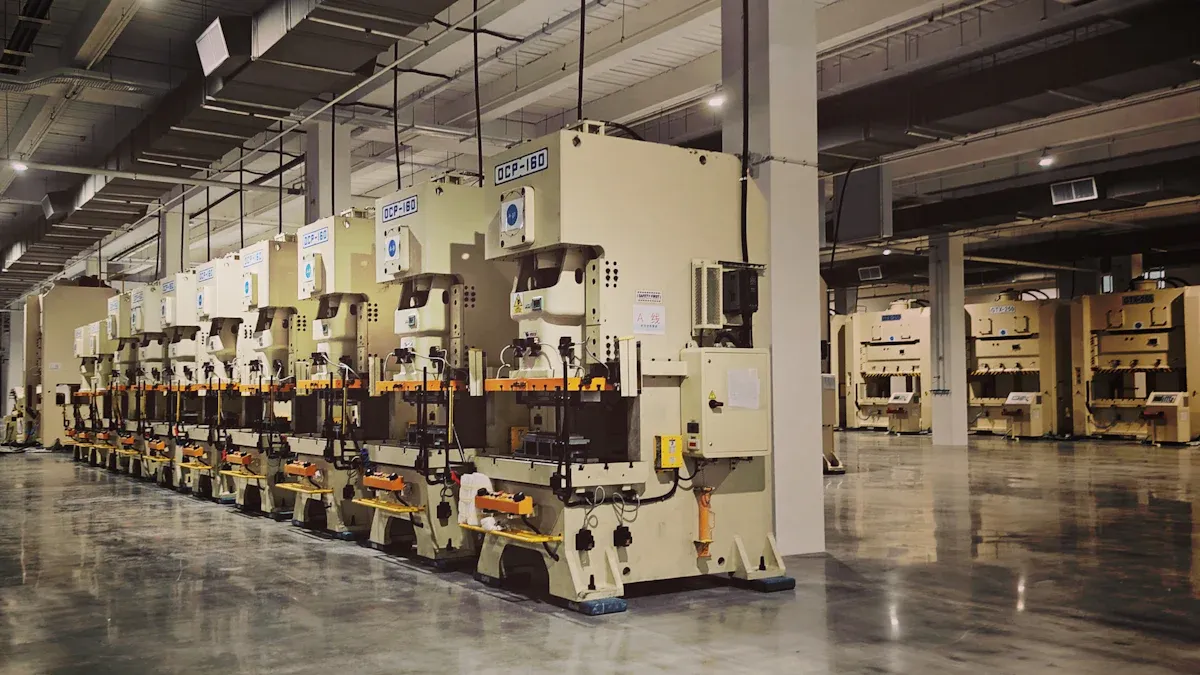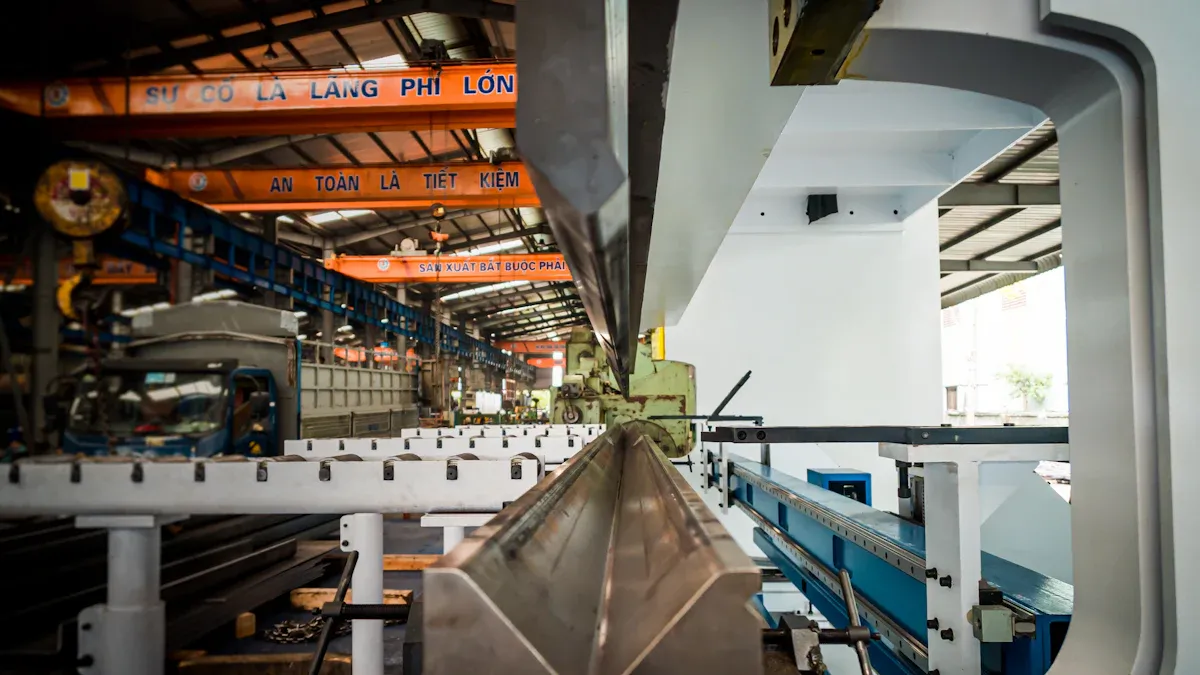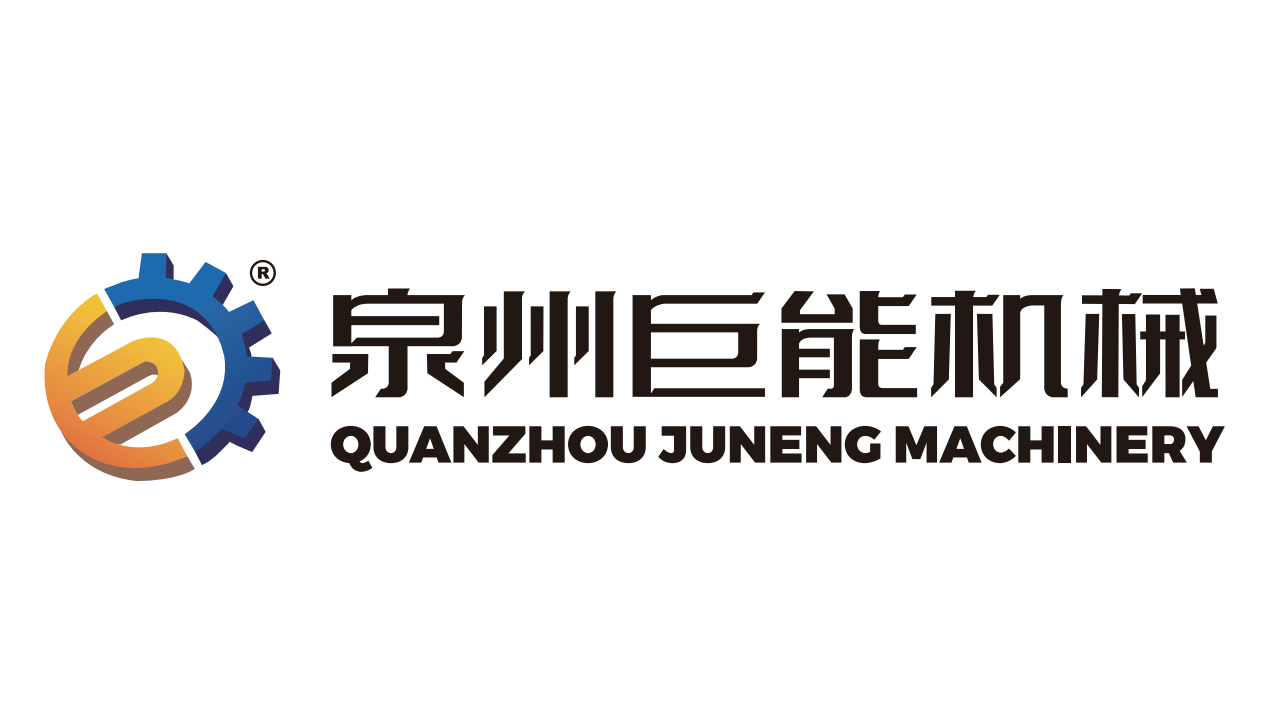Choosing the right Flaskless Molding Machines is very important. Your choice should match your needs, like product type and quantity. Think about how much space you have in your factory too. Each machine has special advantages for different goals. Knowing these differences helps you pick the best Flaskless Molding Machine for your work.
Key Takeaways
Vertical molding machines are small and fit in tight spaces. They are great for precise work in smaller factories.
Horizontal molding machines are fast and good for making many items. They work best for industries needing large amounts of products.
Think about what you are making; vertical machines are better for detailed items. Horizontal machines are better for bigger, simpler molds.
Check your factory space; vertical machines save room. Horizontal machines need more space and careful setup.
Look at your budget; vertical machines cost less to buy and run. Horizontal machines may save money if you make a lot of products.
Both machines have strengths; pick one that fits your goals. This helps you work faster and save money.
Keep up with maintenance; vertical machines are cheaper and easier to fix. Horizontal machines can cost more to repair because they are more complex.
Energy use is different; vertical machines use less power. Horizontal machines are faster but use more energy, which works for busy factories.
Key Differences Between Vertical and Horizontal Flaskless Molding Machines

Machine Orientation
Vertical orientation in flaskless molding machines
Vertical molding machines work with an up-and-down injection system. The mold moves vertically to open and close. This design is great for placing parts like cables or connectors. These machines are small, so they fit in tight spaces. They are also good for making detailed parts with high accuracy.
Horizontal orientation in flaskless molding machines
Horizontal molding machines use a side-to-side injection system. The mold opens and closes horizontally. These machines are best for fast and large-scale production. They are bigger and need more space in factories. However, they work quickly, making them perfect for industries needing speed. They are often used to make car parts and other big items.
Mold Placement
Mold positioning in vertical molding machines
In vertical machines, the mold stands upright. Gravity helps keep parts like metal inserts in place. This setup is great for insert molding, where parts must stay steady. It ensures the finished product is consistent and high-quality.
Mold positioning in horizontal molding machines
Horizontal machines lay the mold flat. This setup is better for making bigger items. It works well with conveyor belts for easier automation. But gravity doesn’t help hold parts in place, so it’s less precise for insert molding.
Space Utilization
Space-saving benefits of vertical molding machines
Vertical machines save space because they are compact. They are perfect for factories with limited room. You can fit several vertical machines in the space of one horizontal machine. This helps factories produce more without needing extra space.
Space requirements for horizontal molding machines
Horizontal machines take up more room because they are larger. They are great for making many items quickly but need careful planning. Factories must organize their layout to fit these machines and keep things running smoothly.
Performance Comparison Table
Here’s a quick look at how vertical and horizontal machines compare:
Tip: If you need precision and space-saving, pick vertical machines. For fast and large production, horizontal machines are better.
Advantages and Disadvantages of Flaskless Molding Machines
Vertical Molding Machines
Benefits of vertical molding machines
Vertical molding machines are small and save factory space. They are great for factories with little room. These machines are very precise and make detailed parts well. Gravity helps keep inserts steady during molding, ensuring good quality.
They are perfect for insert molding, keeping metal inserts in place. This improves productivity and reduces mistakes. Vertical machines also use less energy than horizontal ones. This makes them cheaper to run. If you need precision and space-saving, vertical machines are a smart choice.
Drawbacks of vertical molding machines
Vertical machines are slower than horizontal ones. This makes them less useful for making many items quickly. Their smaller size means they can't make big molds.
These machines may need more hands-on work for tricky molds. This increases labor needs and slows production. While they are great for detailed work, they are not ideal for fast, high-volume jobs.
Horizontal Molding Machines
Benefits of horizontal molding machines
Horizontal machines are fast and can handle large-scale jobs. They can make bigger molds because of their higher capacity. These machines work well with conveyor belts, making automation easier.
They are perfect for industries like car manufacturing, where speed matters. Horizontal machines are great for making many items quickly without losing quality. If you need speed and high output, these machines are a good choice.
Drawbacks of horizontal molding machines
Horizontal machines are big and need more space in factories. This can be a problem for smaller spaces. They also use more energy because they work faster and have higher capacity.
These machines are less precise than vertical ones. Gravity doesn’t help hold inserts, which can lower quality. If you need detailed molds or have limited space, horizontal machines might not work well.
Tip: Think about your factory size and production needs. Each machine type has its own strengths and weaknesses. Choose the one that fits your goals best.
Application Scenarios for Vertical and Horizontal Molding Machines

Industries Best Suited for Vertical Molding Machines
Examples of industries using vertical molding machines
Vertical molding machines are great for making precise castings in large amounts. They are often used in car manufacturing, where accuracy is very important. City projects also use these machines to make detailed parts quickly. Other industries, like pump valve production, rail systems, and kitchenware, depend on vertical machines for their ability to create complex designs with few mistakes.
These machines work fast and can keep producing without stopping. Their small size helps save space in factories, making them a favorite for places with limited room.
Products commonly produced with vertical molding machines
Vertical machines are best for small, detailed items. Car parts like engine pieces and brake pads are made with them. In city projects, they create things like manhole covers and drainage parts. Pump valves and iron castings are also made using these machines. Even kitchen tools, like cast iron pans, are created with vertical molding because it gives a smooth, high-quality finish.
Industries Best Suited for Horizontal Molding Machines
Examples of industries using horizontal molding machines
Horizontal molding machines are better for making big, heavy castings. Factories that make large items, like brake discs, use these machines because they handle bigger molds. Construction equipment makers also like them for creating strong parts quickly.
These machines are also common in car part factories, where speed and making many items fast are key. They work well with conveyor belts and automation, helping industries run more smoothly.
Products commonly produced with horizontal molding machines
Horizontal machines are perfect for making large products. Items like brake discs, construction machine parts, and heavy car components are made this way. They also create big industrial items, like machine bases and pump housings. These machines press materials tightly, ensuring the products are strong and high-quality, even when made in large amounts.
Note: Vertical and horizontal molding machines each have special benefits. Pick the one that fits your industry’s needs, like precision, speed, or handling big molds.
Cost Considerations for Flaskless Molding Machines
Initial Investment
Comparing costs of vertical and horizontal molding machines
When picking between vertical molding and horizontal molding machines, think about costs. Vertical molding machines are smaller, so they cost less to set up. But horizontal molding machines need more space, making installation pricier. Still, they can handle bigger molds, which is great for large jobs.
The cost depends on what you need to make. Vertical machines work well for precise tasks, while horizontal machines are better for making many items fast. Match your budget to your needs to save money.
Factors influencing initial investment
Many things affect how much these machines cost upfront. Smaller vertical machines usually cost less to buy. Bigger horizontal machines, built for tough jobs, cost more at first.
Custom-made machines can cost extra but may help in the long run. Features like servo control, found in Juneng's Servo Molding Machines, add to the price. But they improve accuracy and save time.
Operational Costs
Energy efficiency of vertical molding machines
Vertical molding machines use less energy because they are small. They work precisely and save power, cutting costs over time. This makes them a good choice for factories wanting to save money.
Energy efficiency of horizontal molding machines
Horizontal molding machines are bigger and use more energy. They work fast and make many items quickly. For high-volume jobs, their speed can make up for the higher energy use.
Maintenance Expenses
Maintenance needs for vertical molding machines
Vertical machines need regular care to work well. Their simple design makes them cheaper and easier to fix. Checking them often helps avoid big repair costs later.
Maintenance needs for horizontal molding machines
Horizontal machines are larger and more complex, so fixing them costs more. They handle heavy work, which can wear them out faster. Good parts and regular care keep them running smoothly.
Tip: Think about setup, energy, and repair costs before choosing. Balancing these costs helps you get the most for your money.
Factors to Consider When Choosing Flaskless Molding Machines
Product Design
How product complexity affects machine selection
The design of your product is key when picking a machine. For detailed products, vertical injection molding machines are the best choice. Their upright design helps make precise parts, especially with small inserts or fine details. Horizontal machines are better for simpler, larger molds. They focus on making many items quickly instead of intricate designs.
Using the wrong machine can waste money and materials. Vertical molding is great for detailed work, while horizontal machines are better for big, simple items. Matching the machine to your product’s needs saves time and reduces costs.
Examples of designs for vertical and horizontal machines
Vertical machines are ideal for small, detailed items like car parts, pump valves, and cookware. They are excellent for insert molding, where accuracy is very important. Horizontal machines work better for large items like brake discs, construction parts, and industrial bases. Their size makes them perfect for heavy-duty tasks.
Production Speed
Speed benefits of vertical molding machines
Vertical molding machines are steady and good for detailed work. Their small size makes them easy to set up and use. They are slower than horizontal machines, but their accuracy reduces mistakes. This saves time overall.
Speed benefits of horizontal molding machines
Horizontal machines are made for speed. Their side-to-side system allows faster cycles. This makes them great for industries needing quick production, like car manufacturing. If speed is your main goal, horizontal machines are the best option.
Factory Layout
Space needs for vertical molding machines
Vertical machines are small and save space. You can fit several in a small area, making them great for tight spaces. Their upright design also makes factory layouts simpler, with fewer changes needed.
Space needs for horizontal molding machines
Horizontal machines are bigger and need more room. Factories must plan carefully to fit them without causing problems. They take up space but work well with conveyor belts and automation. If your factory is large, horizontal machines can improve production flow.
Tip: Think about your factory size and production goals. Vertical machines are great for small spaces, while horizontal machines work best in bigger factories.
Budget
Affordable choices for vertical molding machines
If you want a cheaper option, vertical flaskless molding machines are a great pick. Their small size means they cost less to buy. You also save on factory space, lowering setup costs. These machines work best for small to medium jobs needing accuracy.
To save more, pick energy-saving models. For example, Juneng’s Servo Molding Machines use special servo control. This feature uses less energy but keeps the machine precise. Energy-efficient machines help cut running costs over time.
Another way to save is by choosing the right machine for your needs. If your products are small or detailed, a vertical flaskless molding machine is perfect. You won’t need to spend extra on a bigger machine you don’t need. Plus, vertical machines are easier to maintain because of their simple design. Regular care keeps them working well without high repair costs.
Tip: Think about your production needs and factory space. A smaller, efficient machine saves money and keeps quality high.
Affordable choices for horizontal molding machines
Horizontal flaskless molding machines are worth it for making many items fast. They cost more upfront but are great for big jobs. If your factory makes large molds, these machines are a smart buy. They work well with conveyor belts and automation, cutting labor costs over time.
To save money, look for machines with features that boost efficiency. For example, Juneng’s Servo Horizontal Sand Molding Machine is fast and precise. Its smooth hydraulic system reduces wear, lowering repair costs. Buying strong machines means fewer problems and less downtime, saving money in the long run.
You can also check for used machines from trusted brands. These cost less but still work well. Just make sure they fit your needs and are in good condition.
Note: Horizontal machines are best for factories with lots of space and big production goals. Pick one that balances cost, size, and efficiency to get the most value.
Deciding between vertical and horizontal flaskless molding machines depends on what you need. Both types have their own strengths. Vertical machines are great for saving space and making detailed items. Horizontal machines are faster and better for making many products quickly.
Think about things like product design, speed, and factory space. Vertical machines take up less room and cost less to start with. Horizontal machines work well with automation and can handle bigger molds. Check the table below to help you decide:
Think about your goals and limits. Choosing the right machine for your needs saves money and boosts efficiency.
FAQ
1. What is a flaskless molding machine?
A flaskless molding machine makes molds without traditional flasks. It uses modern technology to shape molds directly. This improves speed and accuracy in manufacturing.
2. How are vertical and horizontal flaskless molding machines different?
Vertical machines are compact and focus on precision. Horizontal machines are larger and built for speed. Pick one based on your factory space and production needs.
3. Which industries use flaskless molding machines the most?
Industries like car manufacturing, construction, and kitchenware rely on these machines. They are great for making car parts, heavy equipment, and detailed cast iron items.
4. Are flaskless molding machines energy-efficient?
Yes, many flaskless molding machines save energy. Vertical machines use less power because they are smaller. Horizontal machines balance energy use with fast production.
5. Can flaskless molding machines make complex designs?
Yes! Vertical machines are great for detailed and precise molds. Horizontal machines are better for simple, large designs made quickly.
6. How much space do flaskless molding machines need?
Vertical machines are small and fit in tight spaces. Horizontal machines need more room but work well with conveyor systems for automation.
7. What should you think about before buying a flaskless molding machine?
Look at your product design, speed needs, factory size, and budget. Choose a machine that fits your goals and space.
8. Why pick Juneng’s Servo Molding Machines?
Juneng’s Servo Molding Machines are precise, efficient, and reliable. Their advanced technology ensures accurate molds and saves energy, lowering costs.
Tip: Always choose a flaskless molding machine that matches your production needs for the best results.

